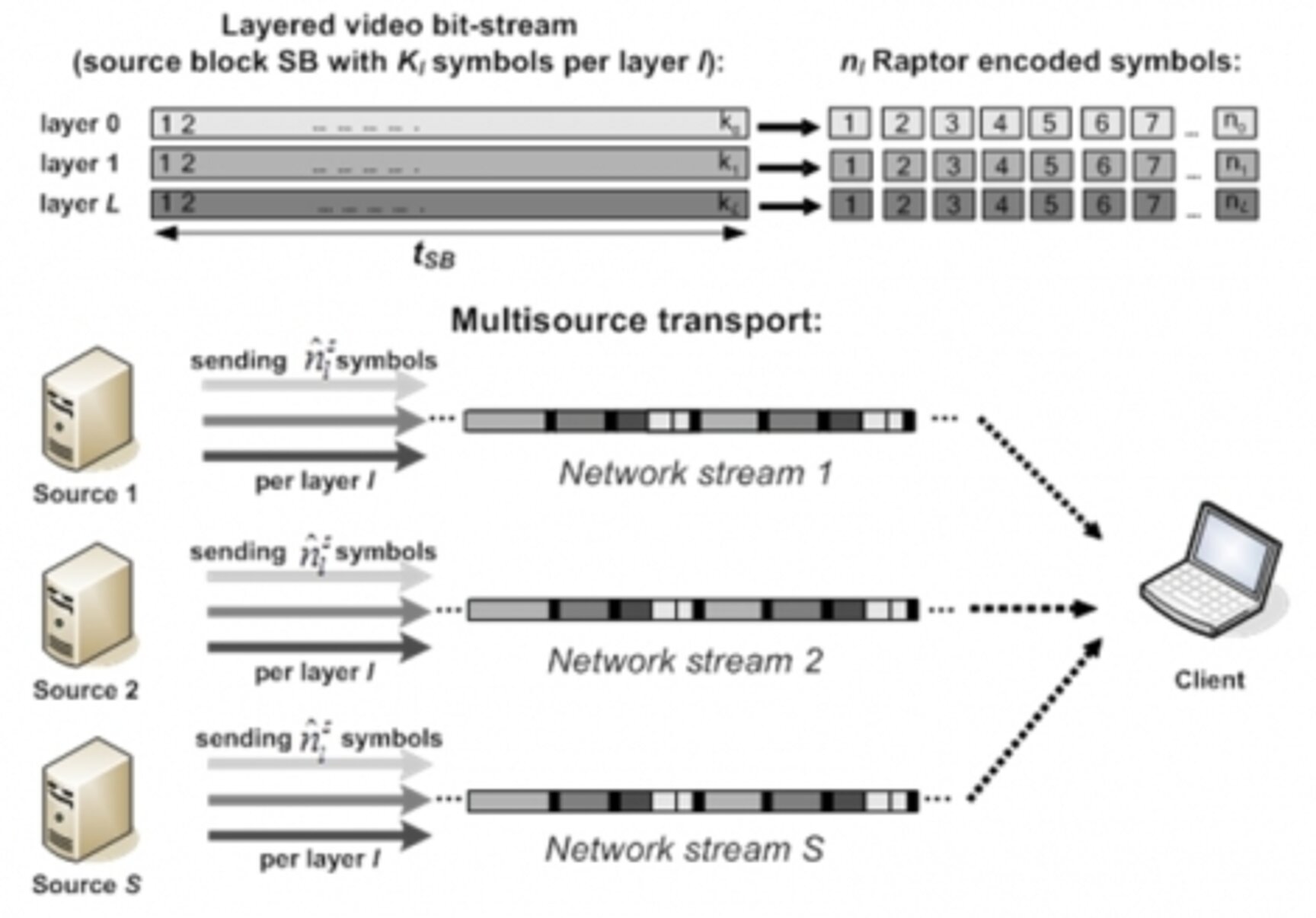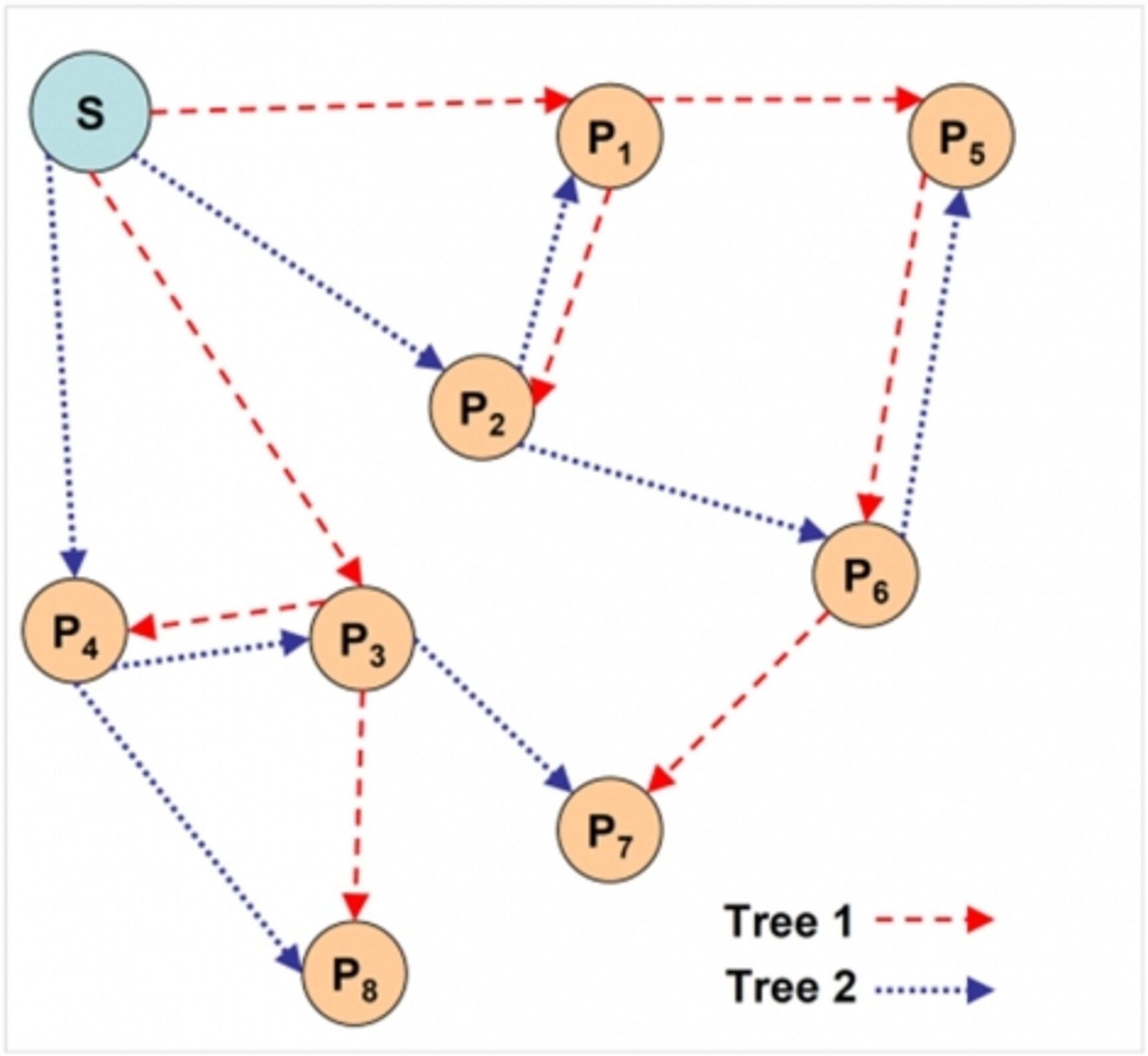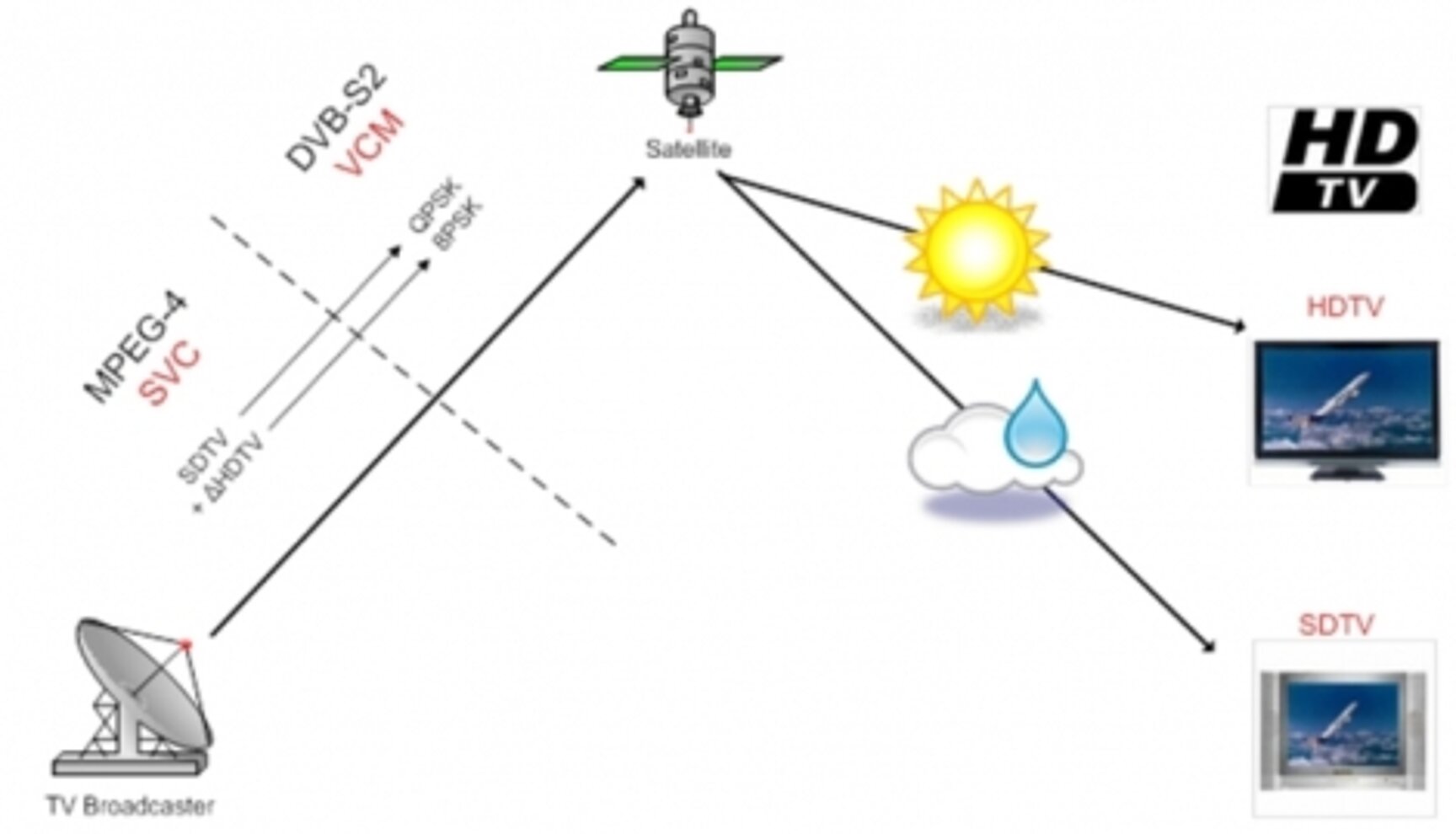Multimedia transmission is the key component for delivering media to mobile and fixed clients. Scalable Video Coding is a technique which brings improvements in different scenarios form conversational Internet services over, p2p streaming in ad-hoc networks up to multi-screen broadcast.
Different solutions have been proposed in the last years where the H.264/AVC-based scalable video coding (SVC) has been analyzed in adaptive streaming service environments.
SVC-based multisource streaming for robust video transmission in mobile ad hoc networks
A multi-source streaming approach to increase the robustness of real-time video transmission in MANETs. For that, the source coding is based on the Scalable Video Coding (SVC) extension of H.264/MPEG4-AVC with different layers for assigning importance for transmission. Channel coding is based on a novel Unequal Packet Loss Protection (UPLP) scheme, which is based on Raptor forward error correction codes. While in the approach, the reception of a single stream guarantees base quality only, the combined reception enables play-back of video at full quality and/or lower error rates.

Low-delay Peer-to-Peer Streaming using Scalable Video Coding
Peer-to-peer (P2P) networks represent a valuable architecture for streaming video over the Internet. In these systems, users contribute their resources to relay the media to others and no dedicated infrastructure is required. In order to ensure a low end-to-end delay, P2P overlay networks are often organized as a set of complementary multicast trees. In this scenario, the reliability of the overlay links is critical for the performance of the system since temporary link failure or network congestion can cause a significant disruption of the end-user quality. The Scalable Video Coding (SVC) standard enables efficient usage of the network capacity by allowing intermediate high capacity nodes in the overlay network to dynamically extract layers from the scalable bit stream to serve less capable peers.

Priority-based Media Delivery (PMD) using SVC with RTP and HTTP Streaming
PMD overcomes link interruptions and channel bitrate reductions in mobile networks by performing a transmission scheduling algorithm that prioritizes media data according to its importance. Receivers loose connectivity during link interruptions and do not receive any data. The approach aims to use the same transmission bitrate and overall buffer size as the traditional streaming approach, yet is more likely to overcome interruptions and phases with reduced bitrate. PMD achieves longer continuous playback than the traditional approach, avoiding disruptions in the video playout thus improving the video playback quality.

HD Video Broadcasting using Scalable Video Coding combined with DVB-S2 Variable Coding and Modulation
The Scalable Video Coding (SVC) is an extension of H.264/AVC offering temporal, spatial, and quality scalability. Compared to the non-scalable profile of H.264/AVC, SVC allows layered transmission of video data. Variable Coding and Modulation (VCM) based DVB-S2 Video Broadcasting Systems enables effective selection of modulation modes and FEC code-rates offering differentiated error protection. In this work the usage of SVC with the DVB-S2 VCM mode has been investigated.

Related Publications
Thomas Schierl, Yago Sanchez de la Fuente, Ralf Globisch, Cornelius Hellge, and Thomas Wiegand:
Priority-based Media Delivery using SVC with RTP and HTTP Streaming,
Multimedia Tools and Applications, Springer Science+Business Media, LLC 2010, vol. 55, issue 2, pp.227-246, November 2011.
Thomas Schierl, Thomas Stockhammer, and Thomas Wiegand:
Mobile Video Transmission Using Scalable Video Coding,
IEEE Transactions on Circuits and Systems for Video Technology, Special Issue on Scalable Video Coding, vol. 17, no. 9, pp. 1204-1217, September 2007, Invited Paper.
Thomas Stockhammer, Tiago Gasiba, Wissam Abdel Samad, Thomas Schierl, Hrvoje Jenkac, Thomas Wiegand, and Wen Xu:
Nested harmonic broadcasting for scalable video over mobile datacast channels,
Wiley Journal - Wireless Communications and Mobile Computing, Special Issue on Video Communications for 4G Wireless Systems, vol. 7, is. 2, pp. 235-256, February 2007.
Thomas Schierl, Karsten Gänger, Cornelius Hellge, Thomas Wiegand, and Thomas Stockhammer:
SVC-based multisource streaming for robust video transmission in mobile ad hoc networks,
Special Issue on Multimedia in Wireless/Mobile ad hoc Networks, IEEE Wireless Communications Magazine, vol. 13. is. 5, October 2006, Invited Paper.
Shpend Mirta, Thomas Schierl, Thomas Wiegand, Patricia Inigo, C. LeGuern, C. Moreau, L. Guarnieri, and J. Tronc:
HD Video Broadcasting using Scalable Video Coding combined with DVB-S2 Variable Coding and Modulation,
5th Advanced Satellite Multimedia Systems Conference and the 11th Signal Processing for Space Communications Workshop, Cagliari, Italy, September 2010.
Pierpaolo Baccichet, Thomas Schierl, Thomas Wiegand, and Bernd Girod:
Low-delay Peer-to-Peer Streaming using Scalable Video Coding,
Packet Video Workshop 2007, in Proceedings Packet Video 2007, Lausanne, Switzerland, pp. 173 – 181, November 2007.
Thomas Schierl, Karsten Gänger, Cornelius Hellge, Thomas Stockhammer, and Thomas Wiegand:
Multi Source Streaming for Robust Video Transmission in Mobile Ad-Hoc Networks,
IEEE International Conference on Image Processing (ICIP'06), Atlanta, GA, USA, October 2006.
Xiaoqing Zhu, Thomas Schierl, Thomas Wiegand, and Bernd Girod:
Video Multicast over Wireless Mesh Networks with Scalable Video Coding (SVC),
Visual Communications and Image Processing (VCIP'08), San Jose, CA, USA, January 2008.
Thomas Schierl, Stian Johansen, Andrew Perkis, and Thomas Wiegand:
Rateless Scalable Video Coding for Overlay Multisource Streaming in MANETs,
Journal of Visual Communication and Image Representation, July 2008.